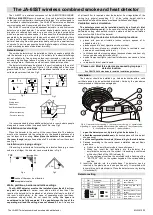
MY22H03 - 32_1.0_04.10.2021
102
Operation
6.6.15 Adjusting the rear frame damper rebound damper
Only applies to pedelecs with this equipment
The rear frame damper rebounds at a controlled
speed if it is optimally adjusted. The rear wheel
does not bounce off rough surfaces or the ground;
it stays in contact with the ground instead
(blue line).
The saddle is raised slightly if the bump is
compensated and gently sinks downwards when
the suspension deflects as soon as the wheel
touches the ground after the bump. The rear
frame damper rebounds in a controlled way, so
that the rider remains sitting in a horizontal
position when the next bump is absorbed. The
suspension motion is predictable and controlled.
The rider is not thrown upwards or forwards
(green line).
The rebound adjuster setting depends on the air
pressure setting. A higher sag requires lower
rebound damping.
Figure 107: Optimum rear frame damper riding performance
The suspension rebound speed affects the
wheel's contact with the ground, which, in turn,
has an influence on control and efficiency. The
damper should rebound fast enough to sustain
traction without producing an erratic or bumpy
sensation. If rebound damping is too tight, the
damper is unable to rebound fast enough before
the next impact.
Adjust the rebound damping in such a way that the
rear frame damper rebounds quickly, but without
bottoming out upwards. Bottoming out refers to
when the rear frame damper rebounds too quickly
and stops moving abruptly once it has reached the
full rebound distance. You can hear and feel a
slight impact when this happens.
















































